A lifesaving presence: Fire Service’s book stall at Ekushey Book Fair
A lifesaving presence: Fire Service’s book stall at Ekushey Book Fair
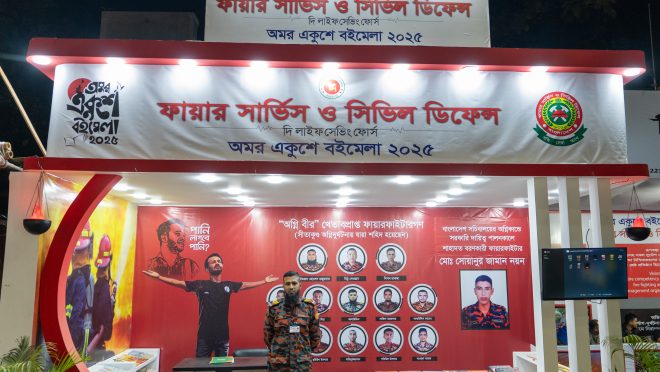
Amid the lively buzz of the Ekushey Book Fair, there’s a quiet corner that has always been my favourite—not just for the books, but for the people behind them and the purpose they serve. If you have wandered through the fairgrounds, you might have noticed a fire truck parked beside the Fire Service control centre, standing ready and alert.
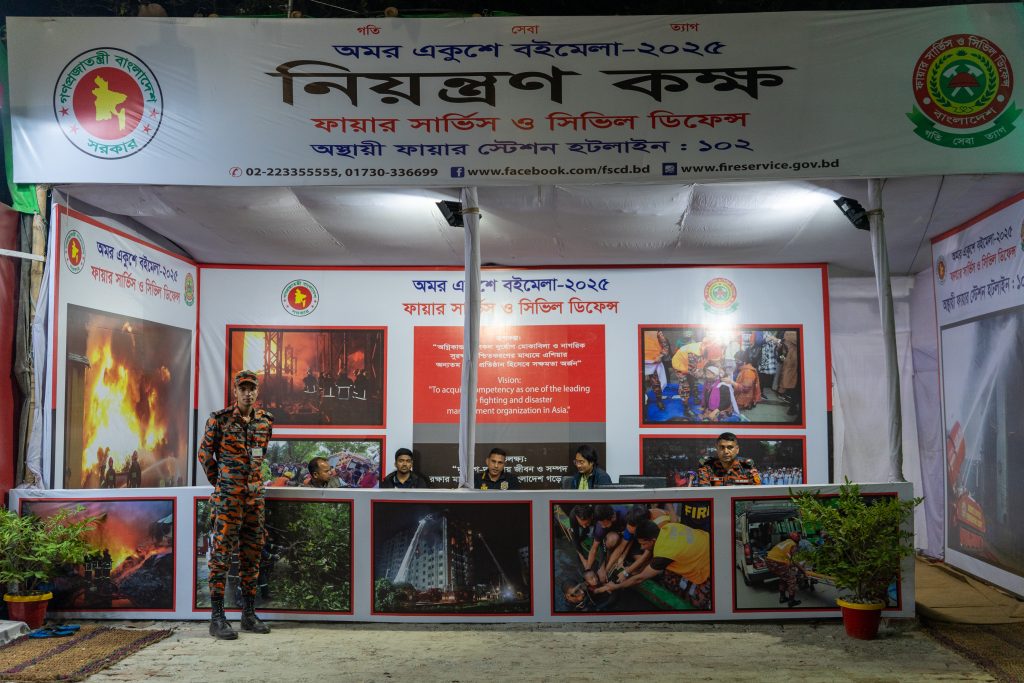
This year, the Fire Service and Civil Defence stall carries a solemn tribute. A banner at the back honours 13 brave firefighters who perished in the Sitakunda fire, along with Md. Sohanur Zaman Noyon, who died in last year’s Secretariat blaze. The stall also displays images of Abu Sayeed and Mir Mugdho—two students murdered in the July uprising.
As I approached, a fire service member greeted me with a warm smile. I smiled back and glanced through the books they had brought this year. The collection ranged from children’s guides to academic discussions on fire safety. Nazib Hossain, who was in charge of the stall, walked me through their selection—covering topics such as thunderstorms, earthquakes, first aid, medical emergencies, fire safety, and search-and-rescue techniques. He explained, “People don’t just come here for books; many ask about how to handle fires in their early stages.” Seeing my visible curiosity, he suggested I speak with Station Officer Shahidul Islam Sumon.
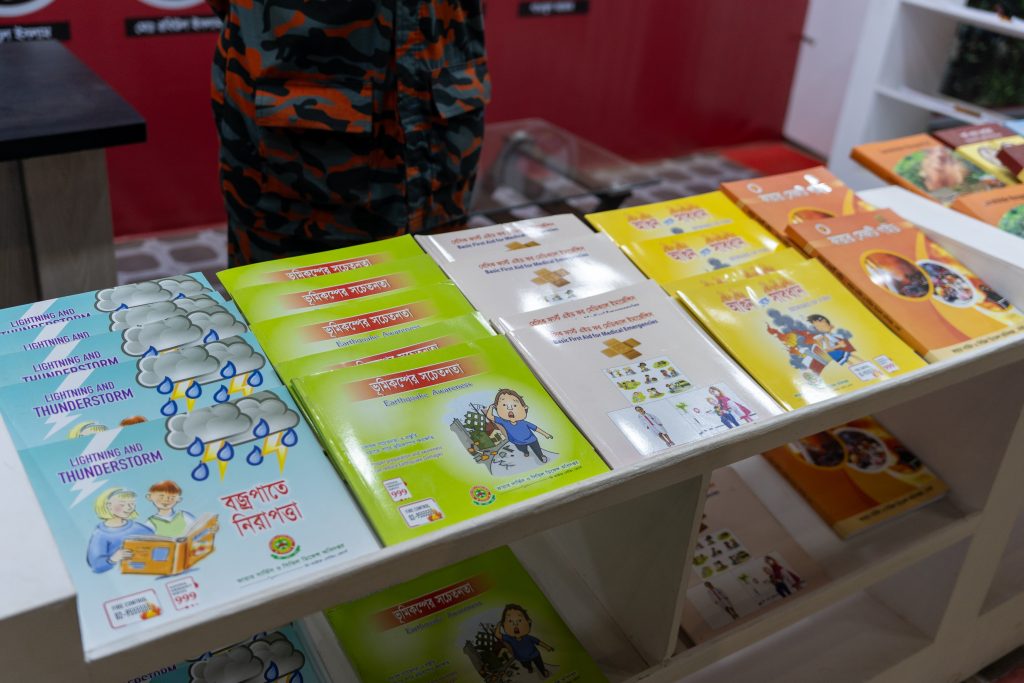
At the fire service control room, Sumon and his colleagues welcomed me with the same warmth. Moments later, a cup of tea arrived, and I settled in for our conversation. When I asked when the Fire Service first set up a book stall at the fair, Sumon said, “We’ve been present since the book fair’s inception, but we officially set up a stall in 2021.”
When asked about how many firefighters were stationed at the fair. Sumon informed me, “We have 17 firefighters in the Suhrawardy Udyan area and 13 firefighters in Bangla Academy, making a total of 30.” How do they respond to emergencies in such a crowded space? He explained, “We’ve divided the fairgrounds into 10 zones. A firefighter is stationed at each, equipped with an extinguisher. Five of them are inside Bangla Academy. They remain connected via walkie-talkies, ensuring an immediate response. If the situation escalates, the fire tender is deployed.”
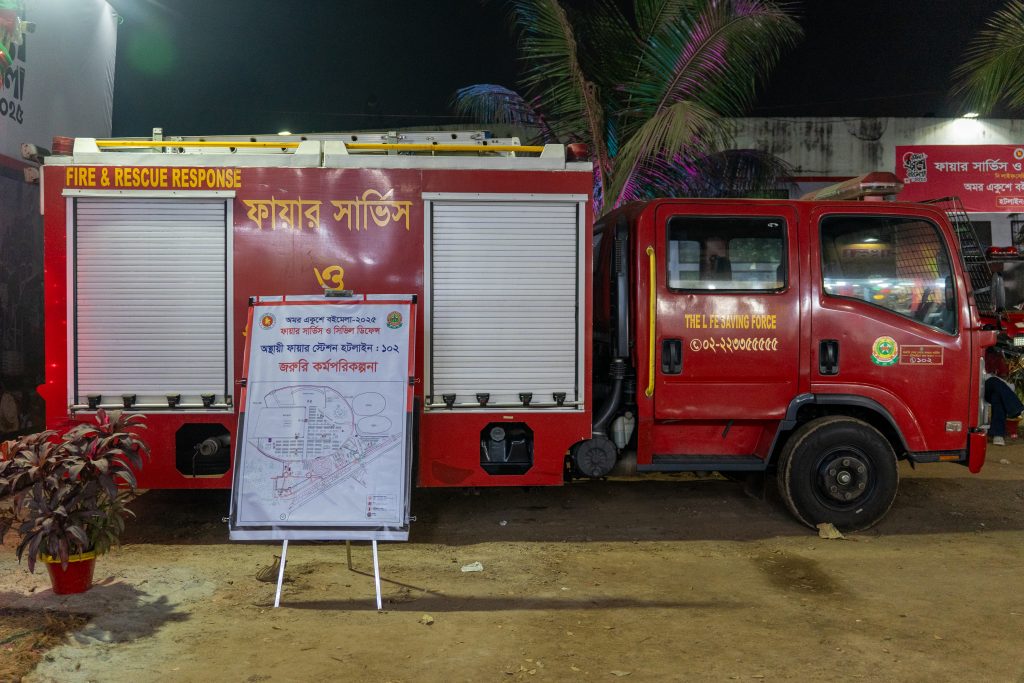
When I asked if there had been any fire incidents this year, Sumon nodded. “Yes, two so far. One was a minor short circuit at a stall. The other, on 1 February near Muktomoncho, was more serious—a fire broke out in a pile of trash and spread quickly. We had to intervene before it got out of control.”
And what are the most high-risk zones of the fair, you might wonder. He pointed to the food stalls. “They use gas cylinders and open flames for cooking, making them high-risk zones. I’ve repeatedly urged the authorities to mandate fire extinguishers and basic fire safety training for stall owners. But nothing has been done. It’s frustrating—people’s lives are at risk.”
I was also curious about what equipment they had on standby. Sumon listed, “We have an ambulance, a fire tender, and three pipes to pump water from the lake.” I pointed out the fire truck I had seen earlier, and Sumon corrected me with a smile. “That’s actually a fire tender. It carries water but doesn’t have a ladder. Trucks with ladders are called TTLs (Turntable Ladders), and different types of fire vehicles serve different purposes.”
As we spoke, I asked if children ever visited the stall, saying they wanted to become firefighters. Sumon chuckled. “Oh, yes! Just the other day, a little boy visited with his parents. I was amazed at how much he knew about firefighting equipment—everything he had learnt was from YouTube.”
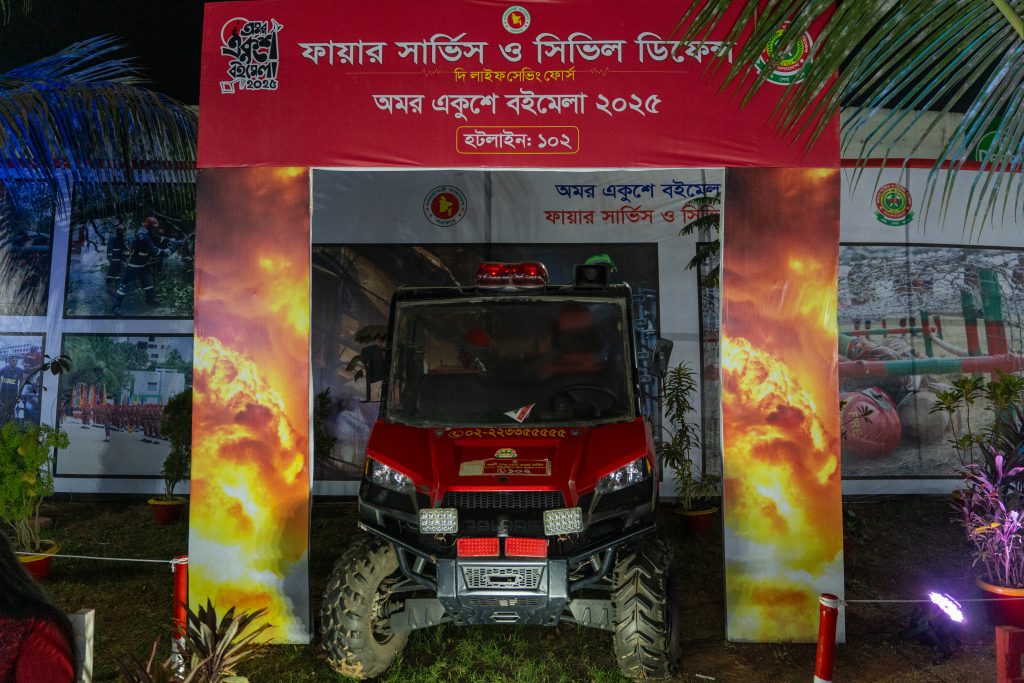
Last year, there was a 3D fire safety demonstration that was particularly popular among children, but he sighed as he admitted, “We wanted to keep it, but budget constraints made it impossible.”
Our conversation turned practical when I admitted that I had never used a fire extinguisher. Sensing my curiosity, Sumon grabbed one and demonstrated how it works. “First, release the pin.” “Like a grenade?” I asked. He grinned. “Like a grenade, exactly. Then, aim the nozzle and press the handle. It’s that simple.”
Before I left, Sumon had one last message. “Everyone should remember our hotline—102. We used to respond to 999, but now it has changed. In any emergency, call us. We’re always just one call away. And to stall owners—please keep a fire extinguisher. It could save lives.”
At the stall, a banner reads: Fire Service and Civil Defence—A Life-Saving Force. And indeed, they are. Who wouldn’t be a fan of these real-life heroes?


